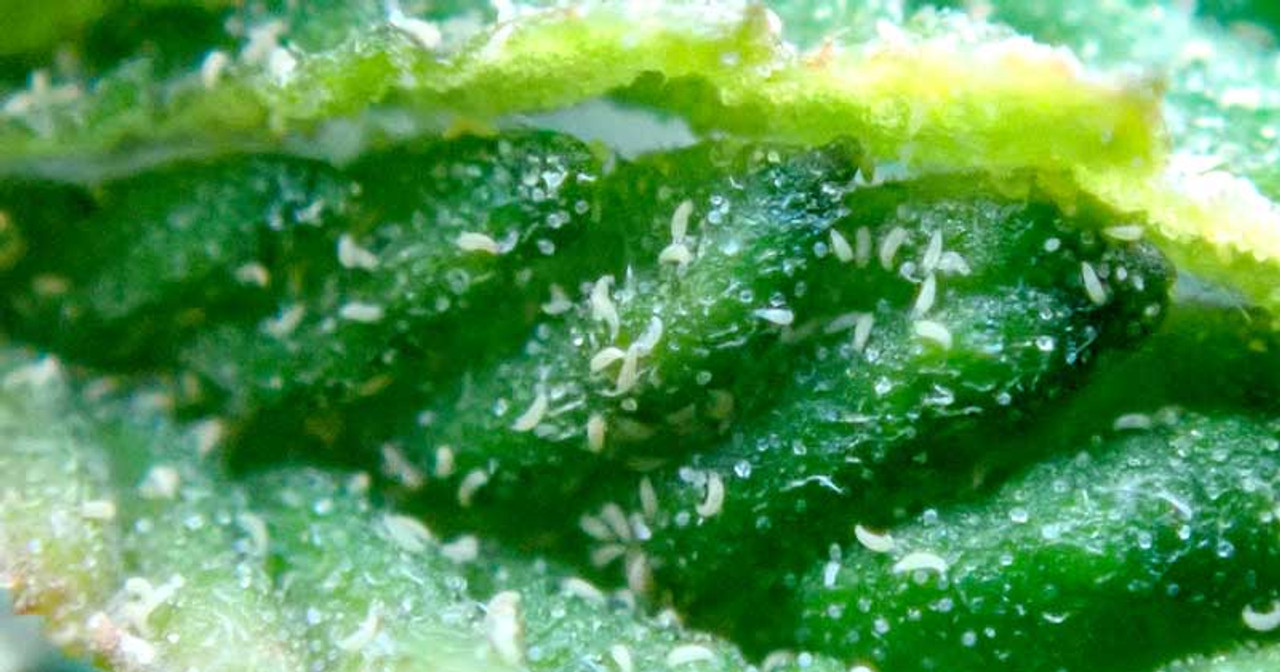Hemp Russet Mites

The hemp russet mite (Aculops cannabicola) is a member of the Eriophyoid mite family, and has emerged as a devastating pest in cannabis cultivation. The eriophyoids mite are unique among the acari: they have worm-like bodies (known as fusiform) and larvae and adults have 4 legs, not 8 like other mites. Eriophyoid mites are also microscopic; too small to be seen with the naked eye.
FAQs About Hemp Russet Mites
Hemp Russet Mites are a microscopic species that are difficult to detect before crop damage occurs. Initial symptoms of Russet Mite infestations include curled leaves, often with a silvery sheen on the underside. Eventually, these leaves will become brown and brittle. Russet Mites are impossible to see with the naked eye and require high powered magnification to properly identify (at least 60-80x magnification).
Hemp Russet Mite eggs develop in as little as 3 days to a week depending on crop conditions. Adult Russet Mites can survive for up to a month with an adequate food supply and conditions.
Unlike most mite species, Russet Mites have an oblong or torpedo shaped body which resembles a microscopic larva or worm. Unlike most mite species, they only have two pairs of legs which face forward and their abdomen is elongated. They are unable to be seen by the naked eye.
Russet Mite populations usually develop in heavily trafficked areas of the crop, hitchhiking on employees clothing or tools. They can also spread through air currents and land near the top of the canopy.
Russet Mites are fed upon by various natural enemies, most notably the generalist predatory mite Amblyseius swirskii. Early detection and control is key since this pest is easily spread by crop activities throughout a facility. Preventative releases of Swirskii or other natural enemies can help keep pest development at bay. Various products such as Sulfur and Hydrogen Peroxide are also commonly utilized but may not be an option in certain stages of plant growth.
Questions About Hemp Russet Mites?
Our team of experts is at your disposal to help you make the best decisions according to the particular needs of your crop. Do not hesitate to call us during normal business hours at (503) 342-6698 or write us through our chat to provide you with personalized service. We will be more than happy to help you!


